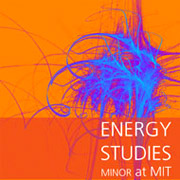ENVIRONMENT: ENERGY
The 21st century energy challenge calls on innovation and expertise from the political, economic, and cultural realms
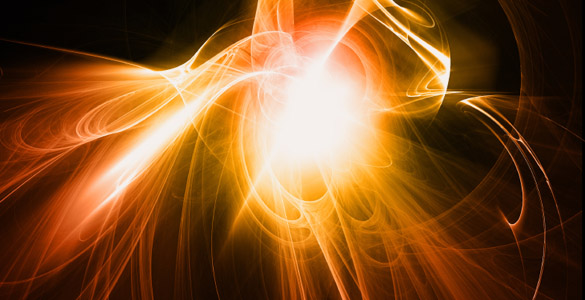
At MIT, faculty and researchers are aware that energy issues require both technological solutions, and innovation and input from the economic, political, and cultural spheres.
26 May, 2010
Innovation needed
Events of the past decade have amplified and made it clear that our nation needs safer and more innovative ways to meet and to manage our energy needs.
Multiple crises related to energy production, distribution and safety — including the catastrophic oil spill in Gulf of Mexico — are vivid reminders that there is a vast amount of work to be done. MIT's graduates in science, engineering, and technology will be deeply engaged in doing much of this work. But what kind of work will they be doing?
Solving energy issues calls on wide range of disciplines
As each recent disaster unfolded, so did its complexity. At MIT, faculty and researchers are aware that meeting 21st century energy needs will require both technological solutions and innovation from economic, political, social, and cultural spheres.
As Susan Silbey, Leon and Anne Goldberg Professor of Humanities, and Professor of Sociology and Anthropology, says, “Technical issues have human and social components, and there is no one solution to the energy problem.”



"History—the record of human experience—underscores how much the current energy problem requires responses in every dimension of human life.”
— Rosalind Williams Dibner Professor of the History of Science and Technology
“Technical issues have human and social components, and there is no one solution to the energy problem.”
— Susan Silbey, Goldberg Professor of Humanities Professor of Sociology and Anthropology
Silbey is a developer of "Energy Decisions, Markets and Policies," a social science course required for students planning to minor in MIT’s new interdisciplinary Energy Studies Program. Endorsed by all five MIT Schools in 2009, the Energy Studies minor program includes a cluster of required and elective classes in the School of Humanities, Arts, and Social Sciences.
Silbey’s class uses analytic tools from social science, management, and technology to explore how individual and collective human behaviors affect—and are affected by—energy costs, consumption and regulations.
“You want people to invest in structures that conserve energy, like solar panels. Those have long-term payoffs. But the cultural norm—the Home Depot rule—is that most people want the payoff in three or four years. What will alter that? American pop culture changed people’s behavior with seat belts and smoking—could it work for energy, too?”
Questions like these "opened the floodgates for understanding the non-engineering aspects of the energy problem,” says Tim Grejtek, a mechanical engineering major who is among the first students to graduate with a minor in energy studies.
The School’s economics class within the energy minor gave Grejtek an “entirely different way to see energy—through a subject I’d not yet been exposed to,” he says.
Faculty experts in anthropology, economics, history, literature, and philosophy offer both elective classes in the energy minor program and classes that address energy issues outside the new minor.
Philosophical History of Energy
Lecturer in philosophy Lee D. Perlman (PhD 1989) and Chemical engineering professor Bernhardt Trout co-teach “A Philosophical History of Energy,”
an elective course within the energy studies minor.
“We explore where ideas come from,” says Perlman. “I start off by asking a room full of physics majors, ‘What is energy?’ It’s a term they’ve used for years. But did they know Aristotle first used the word 2,300 years ago? They understand relativity, but have they read Einstein? My favorite assignment is reading Gottfried Leibniz, an inventor of calculus and a 16th century role model for path-breaking scientists today. He was famously open to views quite different from those that were handed to him.”
Perlman and Trout’s class includes close reading of scientific authors from Plato to Isaac Newton. “We read out loud to gain clarity. They learn the languages of both math and humanities,” says Perlman.
Environmental Policy and Economics
The School’s economics faculty links energy policy, public health and markets in elective classes that may be taken for credit in the new minor. Michael Greenstone (who, when this story was published was the 3M Professor of Environmental Economics at MIT) lead “Environmental Policy and Economics,” a class in which students investigate the proper role of government in the regulation of the environment.

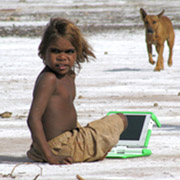
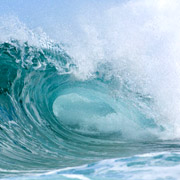
"You want people to invest in structures that conserve energy, like solar panels. Those have long-term payoffs. But the cultural norm is that most people want the payoff in three or four years. What will alter that?"
— Susan Silbey, Goldberg Professor of Humanities Professor of Sociology and Anthropology
"Questions like that opened the floodgates for understanding the non-engineering aspects of the energy problem."
— Tim Grejtek, Mechanical Engineering, Minor in Energy Studies, '10
Addressing energy issues broadly
Outside the formal energy minor program, the School’s classes in history, political science and literature address energy issues as an integral part of human endeavor.
Environmental History
In "Introduction to Environmental History" Harriet Ritvo, Arthur J. Conner Professor of History, offers a survey of human interactions with the natural world from the end of the last glaciation to the present. An important theme in the class is the procurement and consumption of energy, considered in the broadest sense, including energy provided by food and muscle, as well as energy provided by machines and fossil fuels.
Technology in History
Rosalind Williams, Dibner Professor of the History of Science and Technology, teaches Technology in History, in which students read about energy use and consumption going back to fire in prehistoric times.
“We cover energy in every age, from the agricultural civilizations of the Middle East to Easter Island to the atomic bomb. History—the record of human experience—shows how much energy affects everything about human life. It underscores how much the current ‘energy problem’ requires responses in every dimension of human life,” she says.
The Energy Crisis: Past and Present
Meg Jacobs, associate professor of history, takes up the role of energy in recent U.S. history. Students in her new class, "The Energy Crisis: Past and Present," study how attitudes toward energy consumption have changed from the spread of the highways in the 1950s to the proliferation of SUVs in the 1990s.
“We also study changing attitudes toward different energy supplies. We analyze changes in the debate over nuclear energy from the dropping of atomic bombs to contemporary concerns about waste and proliferation to the changing relationship between the US and the Middle East. The class enables students to place technological solutions in their political, economic, and social context,” Jacobs says.
Jacobs also guides her students to explore the territory mapped out by Silbey—the areas of politics, economics, public opinion and culture that affect the implementation and adoption of new energy technologies.
“We ask, ‘Why didn’t former President Jimmy Carter's solar initiatives spur long-term growth of the solar industry? We analyze the many factors that might make development of alternative energies more or less likely today,” says Jacobs.
While social scientists ask, "Why did—or did not—an event or change occur?," the School’s music, theater and writing faculty may charge their students to ask, "What if?," and to get way outside the box in thinking about energy.

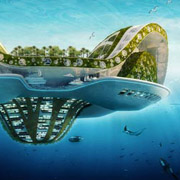
"Creativity is mysterious, and people working in science and engineering are not immune..to weighing solutions in alien or seemingly absurd terms. Science fiction encourages creative thinking about energy because of its ‘if this goes on’ approach."
— Joe Haldeman, acclaimed science fiction author, former Adjunct Professor, Writing and Humanistic Studies
Joe Haldeman, Adjunct Professor in the Program in Writing and Humanistic Studies, knows the "what if" world well. The acclaimed science fiction author, who teaches "Writing Science Fiction," each fall term at MIT, has won Hugo and Nebula Awards, and the science fiction community's highest honor, the Damon Knight Memorial Grand Master Award.
“Creativity is mysterious," he says, "and people working in science and engineering are not immune to random process, to weighing solutions in alien or seemingly absurd terms. Science fiction encourages creative thinking about energy because of its ‘if this goes on’ approach, extrapolating from current practices into future disaster."
“Any fiction course that requires the creation of a complete story gives an engineering student a different kind of challenge in setting up and solving problems. The creator is in charge of almost all the variables—and they learn, this does not make things easier,” he notes.
Williams, who has been at MIT since 1980 and served as Dean of Students and Undergraduate Education from 1995 to 2000, sees MIT students themselves as sources of energy, fuelling innovation in every field. Having studied history, economics, literature, and sociology alongside science or engineering, MIT grads will generate both new technologies and new ways to frame energy crises and solutions, she predicts.
“They will address the big problems of humankind—health, food, water, and above all energy,” she says. Most importantly, MIT grads will invent “whole new organizations and ways of working as they devote themselves to solving the problems of a crowded, complicated planet.”
About
MIT's new energy minor provides a multidisciplinary approach to understanding the policy, economics, science and technology of energy. All MIT undergraduate students now have a new academic option available to them: a minor in energy, which can be combined with any major subject. The new minor is designed to be inherently cross-disciplinary, drawing on the knowledge and expertise of all five schools at MIT.
Story prepared by MIT SHASS Communications
Editorial and Design Director: Emily Hiestand
Writers: Sarah Wright, Emily Hiestand
Published 26 May 2010
